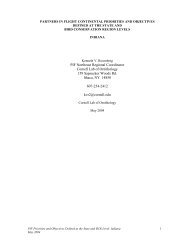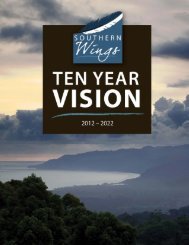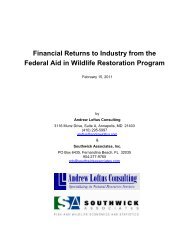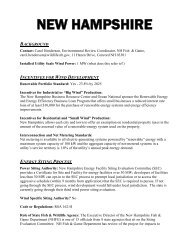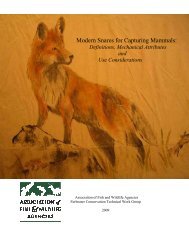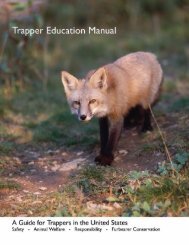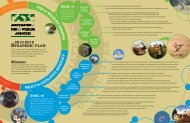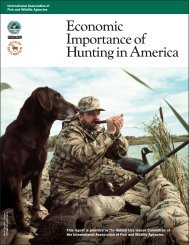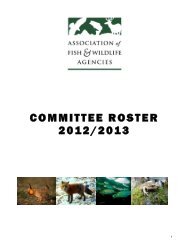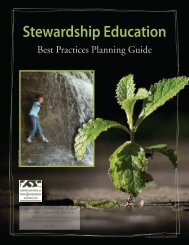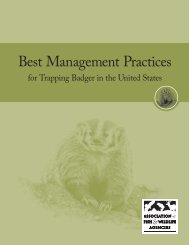Muskrat - Association of Fish and Wildlife Agencies
Muskrat - Association of Fish and Wildlife Agencies
Muskrat - Association of Fish and Wildlife Agencies
You also want an ePaper? Increase the reach of your titles
YUMPU automatically turns print PDFs into web optimized ePapers that Google loves.
Best Management Practices (BMPs) are carefully researched educational guides designedto address animal welfare <strong>and</strong> increase trappers’ efficiency <strong>and</strong> selectivity. The extensiveresearch <strong>and</strong> field-testing used to develop BMPs are described in the Introduction section<strong>of</strong> this manual. The evaluation methods used to develop BMPs have been st<strong>and</strong>ardized,enabling them to be easily updated <strong>and</strong> revised as new traps <strong>and</strong> techniques becomeavailable. All traps listed in the BMPs have been tested <strong>and</strong> meet performance st<strong>and</strong>ardsfor animal welfare, efficiency, selectivity, practicality <strong>and</strong> safety.Figure MK1. <strong>Muskrat</strong>(Ondatra zibethicus)Trapping BMPs provide options, allowing for discretion <strong>and</strong> decision making in thefield. BMPs are meant to be implemented in a voluntary <strong>and</strong> educational approach<strong>and</strong> do not present a single choice that can or must be applied in all cases. BMPs arethe product <strong>of</strong> ongoing work that may be updated as additional traps are identifiedthrough future scientific testing.MUSKRAT2The <strong>Muskrat</strong> at a GlanceCharacteristicsThe muskrat (Ondatra zibethicus) (Figure MK1) is a semiaquatic rodent <strong>and</strong> member<strong>of</strong> the Cricetidea family along with mice <strong>and</strong> voles. Adults weigh between 1 1 / 2 <strong>and</strong>4 pounds, <strong>and</strong> range from 16 to 25 inches in total length. Adult males are generallylarger than adult females. The muskrat has a laterally flattened tail <strong>and</strong> webbed hindfeet, indications <strong>of</strong> its aquatic nature. Pelage color varies from light brown to black.A thick waterpro<strong>of</strong> under-layer <strong>of</strong> fur is overlain by long, glossy guard hairs.Range<strong>Muskrat</strong>s inhabit all <strong>of</strong> North America except the Eastern Gulf states, <strong>and</strong> much <strong>of</strong> Nevada,California <strong>and</strong> Texas. The species is rarely found in Mexico, but the range extends north tothe Arctic Circle. <strong>Muskrat</strong>s were introduced to Europe early in the 20th century, <strong>and</strong> nowinhabit many parts <strong>of</strong> Eurasia.HabitatThe muskrat is an aquatic mammal <strong>and</strong> prefers to inhabit still or slow-moving bodies <strong>of</strong>water. Common habitat types are marshes, sloughs, streams, lakes, ponds <strong>and</strong> variousother types <strong>of</strong> wetl<strong>and</strong>s. Typically, they prefer freshwater, but in coastal areas, muskrats willinhabit brackish marsh. Where bank slope is adequate, muskrats <strong>of</strong>ten build dens in thebank <strong>of</strong> a water body, but commonly build houses <strong>of</strong> vegetation in marshes <strong>and</strong> sloughs.Food HabitsThe muskrat is chiefly herbivorous, but in some parts <strong>of</strong> its range it is known to eat freshwaterclams, crayfish, fish, frogs <strong>and</strong> other small animals. When consuming aquatic vegetation,muskrats <strong>of</strong>ten eat the shoots, leaves, bulbs <strong>and</strong> rootstocks <strong>of</strong> plants. They preferemergent vegetation such as cattails, three-cornered sedge <strong>and</strong> bulrush, but <strong>of</strong>ten feed onsubmergent vegetation as well. <strong>Muskrat</strong>s are also known to eat corn <strong>and</strong> other agricultural plantswhen available.ReproductionDepending on the geographic location <strong>of</strong> a population, a restricted breeding seasonmay occur (northern part <strong>of</strong> range), or breeding may occur year round (southern part <strong>of</strong>range). After mating, there is a gestation period <strong>of</strong> 28 to 30 days. A litter normally consists<strong>of</strong> three to nine young. The muskrat may birth up to six litters per year, though mosthave only two or three litters annually. Weaning occurs at three to four weeks after birth.Young are the same size as adults at six months <strong>and</strong> normally breed after the first year.<strong>Association</strong> <strong>of</strong> <strong>Fish</strong> <strong>and</strong> <strong>Wildlife</strong> <strong>Agencies</strong>



